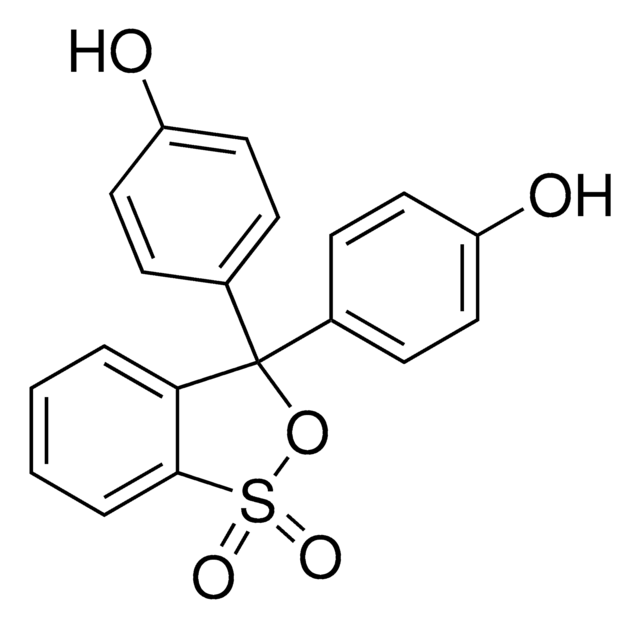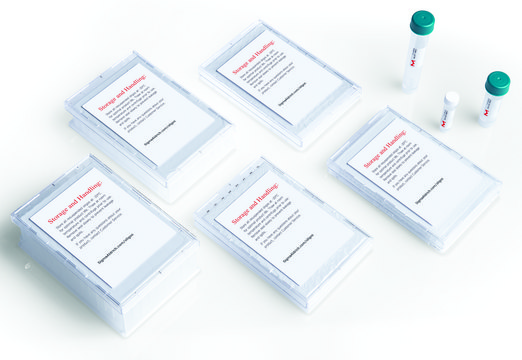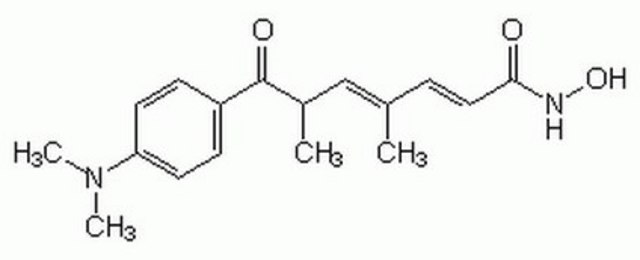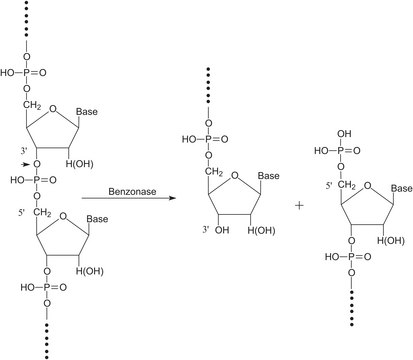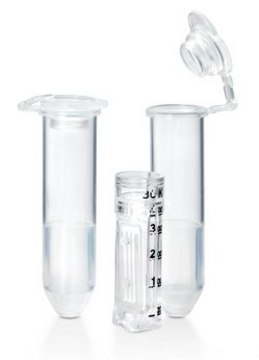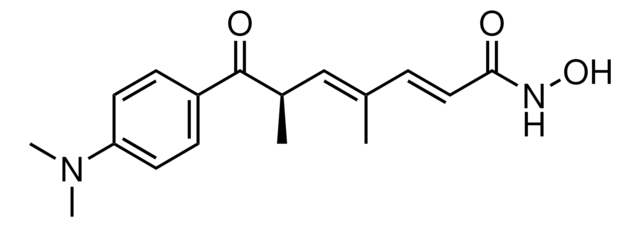推荐产品
技术
protein extraction: suitable
应用
sample preparation
一般描述
One of the challenges of functional proteomics is separation of complex protein mixtures for quantitative and differential subcellular localization analysis. This necessitates standardized and repeatable operation procedures to isolate subcellular proteomes from tissues and cells. The Chemicon Compartmental Protein Extraction Kit addresses the challenge by providing an innovative, easy-to-perform, and cost-effective method to sequentially isolate cytoplasmic, nuclear, membrane, and cytoskeleton proteins from mammalian tissues and cells based on a proprietary technique.
This kit contains enough reagents to enrich four compartmental proteins from 5 grams tissues or approximately 125 million cells. The efficiency of subcellular fractionation has been investigated by SDS-PAGE and immunoblotting of selected marker proteins.
This kit contains enough reagents to enrich four compartmental proteins from 5 grams tissues or approximately 125 million cells. The efficiency of subcellular fractionation has been investigated by SDS-PAGE and immunoblotting of selected marker proteins.
应用
Detection of differential post-translational modifications or differential subcellular localization of target proteins
- Enrichment of low-abundance proteins for visualization and subsequent analysis
- Preparation of nuclear extract from mammalian tissues and cultured cells is crucial for studying DNA binding proteins such as transcription factors employing gel mobility shift techniques
- Preparations of cytoplasmic fractions are useful to study soluble proteins abundant in cytosol
- Preparations of membrane fractions to study membrane proteins such as receptors
- Preparations of cytoskeleton fractions to study cytoskeleton proteins
PROTOCOL:
For buffers C, N, M and CS, add 50X PI to working concentration of 1X before use.
1. Weigh a certain amount of tissue (Wt grams), chop into small pieces, then pipette ice cold buffer C using 2.0 mL per gram tissue or per 20 million cells. Homogenize* the tissue or cells at moderate speed (e.g. speed 4) for 20 seconds. Let it stand on ice for a few seconds, repeat homogenization twice more.
2. Rotate the mixture at 4°C for 20 minutes.
3. Spin at 18,000 to 20,000 x g at 4°C for 20 minutes. Remove and save the supernatant in another tube. The cytoplasmic proteins are in the supernatant.
4. Wash the pellet with 4 mL of ice cold buffer W per gram of tissue/20 million cells, rotate at 4°C for 5 minutes. Spin at 18,000 to 20,000 x g at 4°C for 20 minutes. Drain the supernatant.
5. Add 1.0 mL of ice cold buffer N per gram of tissue/20 million cells to the pellet from step 4, rotate at 4°C for 20 minutes. Spin at 18,000 to 20,000 x g at 4°C for 20 minutes. Remove and save the supernatant in another tube. The nuclear proteins* are in the supernatant.
6. Add 1.0 mL of ice cold buffer M per gram of tissue/20 million cells to the pellet, rotate at 4°C for 20 minutes. Spin at 18,000 to 20,000 x g at 4°C for 20 minutes. Remove and save the supernatant in another tube. The membrane proteins are in the supernatant.
7. Add 0.5 mL of ice cold buffer CS per gram of tissue/20 million cells to the pellet from step 6, rotate at 4°C for 20 minutes. Spin at 18,000 to 20,000 x g at 4°C for 20 minutes; save the supernatant.
8. Wash the pellet with 1.5 mL of ice cold buffer C per gram of tissue/20 million cells, rotate at 4°C for 5 minutes. Spin at 18,000 to 20,000 x g at 4°C for 20 minutes, save supernatant.
9. Combine the supernatants from step 7 and step 8
- Enrichment of low-abundance proteins for visualization and subsequent analysis
- Preparation of nuclear extract from mammalian tissues and cultured cells is crucial for studying DNA binding proteins such as transcription factors employing gel mobility shift techniques
- Preparations of cytoplasmic fractions are useful to study soluble proteins abundant in cytosol
- Preparations of membrane fractions to study membrane proteins such as receptors
- Preparations of cytoskeleton fractions to study cytoskeleton proteins
PROTOCOL:
For buffers C, N, M and CS, add 50X PI to working concentration of 1X before use.
1. Weigh a certain amount of tissue (Wt grams), chop into small pieces, then pipette ice cold buffer C using 2.0 mL per gram tissue or per 20 million cells. Homogenize* the tissue or cells at moderate speed (e.g. speed 4) for 20 seconds. Let it stand on ice for a few seconds, repeat homogenization twice more.
2. Rotate the mixture at 4°C for 20 minutes.
3. Spin at 18,000 to 20,000 x g at 4°C for 20 minutes. Remove and save the supernatant in another tube. The cytoplasmic proteins are in the supernatant.
4. Wash the pellet with 4 mL of ice cold buffer W per gram of tissue/20 million cells, rotate at 4°C for 5 minutes. Spin at 18,000 to 20,000 x g at 4°C for 20 minutes. Drain the supernatant.
5. Add 1.0 mL of ice cold buffer N per gram of tissue/20 million cells to the pellet from step 4, rotate at 4°C for 20 minutes. Spin at 18,000 to 20,000 x g at 4°C for 20 minutes. Remove and save the supernatant in another tube. The nuclear proteins* are in the supernatant.
6. Add 1.0 mL of ice cold buffer M per gram of tissue/20 million cells to the pellet, rotate at 4°C for 20 minutes. Spin at 18,000 to 20,000 x g at 4°C for 20 minutes. Remove and save the supernatant in another tube. The membrane proteins are in the supernatant.
7. Add 0.5 mL of ice cold buffer CS per gram of tissue/20 million cells to the pellet from step 6, rotate at 4°C for 20 minutes. Spin at 18,000 to 20,000 x g at 4°C for 20 minutes; save the supernatant.
8. Wash the pellet with 1.5 mL of ice cold buffer C per gram of tissue/20 million cells, rotate at 4°C for 5 minutes. Spin at 18,000 to 20,000 x g at 4°C for 20 minutes, save supernatant.
9. Combine the supernatants from step 7 and step 8
The cytoskeleton proteins are in the mixed solution. <br /><br />10. Measure the protein concentrations of the four fractions. Aliquot and label the proteins properly and store at -70°C. <br /><br />* We recommend using IKA Ultra Turrax T25 Basic or similar model homogenizer for tissues. Manual homogenizer can also be used; the purpose of the homogenization is to get the tissue lysed completely without breaking the nuclear compartment. It may not be necessary to homogenize the cells; usually pipetting up and down the cells and getting them well resuspended is adequate. <br /><br />** A dialysis step may be necessary if the nuclear fraction is going to be used for the gel mobility shift assay. <br /><br />TROUBLE SHOOTING: <br /><br />1. Cytoplasmic proteins-carryover to nuclear and membrane fractionsRepeat the washing step (step 3 in the protocol) 1-2 times to completely remove cytoplasmic proteins. Add a washing step right after the nuclear protein extraction. <br /><br />2. Nuclear proteins present in the cytoplasmic fractionThe tissue homogenization conditions were too harsh and the cytoplasmic membrane and nuclear membrane were broken. Decrease the speed and times of homogenization. <br /><br />3. Nuclear proteins present in the membrane fractionRepeat the nuclear proteins-extraction step 1-2 times before membrane proteins-extraction. <br /><br />4. Membrane proteins present in the cytoplasmic and nuclear fractionsThe tissue homogenization conditions were too harsh and the nuclear membrane was broken. <br /><br />5. Protein degradations <br /><br />a. Make sure that PI was added to Buffers C, N, M and CS before use. <br /><br />b. 50X PI was not aliquoted during storage and lost activity when frozen-thawed too many times. <br /><br />c. Homogenize the tissue for less time (<20 sec), let the tube stand on ice for a few seconds before the next homogenization.
组分
Buffer C [HEPES (pH7.9), MgCl2, KCl, EDTA, Sucrose, Glycerol, Sodium OrthoVanadate] 1 x 18 mL (2-8°C) Buffer W [HEPES (pH7.9), MgCl2, KCl, EDTA, Sucrose, Glycerol, Sodium OrthoVanadate] 2 x 25 mL (2-8°C) Buffer N [HEPES (pH7.9), MgCl2, NaCl, EDTA, Glycerol, Sodium OrthoVanadate] 6 mL (2-8°C) Buffer M [HEPES (pH7.9), MgCl2, KCl, EDTA, Sucrose, Glycerol, Sodium deoxycholate, NP-40, Sodium OrthoVanadate] 6 mL (2-8°C) Buffer CS [Pipes (pH6.8), MgCl2, NaCl, EDTA, Sucrose, SDS, Sodium OrthoVanadate] 3 mL (2-8°C) 50 x PI [ A cocktail of protease inhibitors] 0.66 mL (-20°C)
储存及稳定性
Store Buffers C, W, N, M and CS at 2-8°C for up to 12 months after date of receipt. Store the 50X PI Buffer at -20°C in undiluted aliquots for up to 12 months after date of receipt. Avoid repeated freeze/thaw cycles.
免责声明
Unless otherwise stated in our catalog or other company documentation accompanying the product(s), our products are intended for research use only and are not to be used for any other purpose, which includes but is not limited to, unauthorized commercial uses, in vitro diagnostic uses, ex vivo or in vivo therapeutic uses or any type of consumption or application to humans or animals.
警示用语:
Danger
危险分类
Aquatic Chronic 3 - Eye Dam. 1 - Met. Corr. 1 - Skin Irrit. 2
储存分类代码
8A - Combustible corrosive hazardous materials
WGK
WGK 3
法规信息
监管及禁止进口产品
我们的科学家团队拥有各种研究领域经验,包括生命科学、材料科学、化学合成、色谱、分析及许多其他领域.
联系技术服务部门